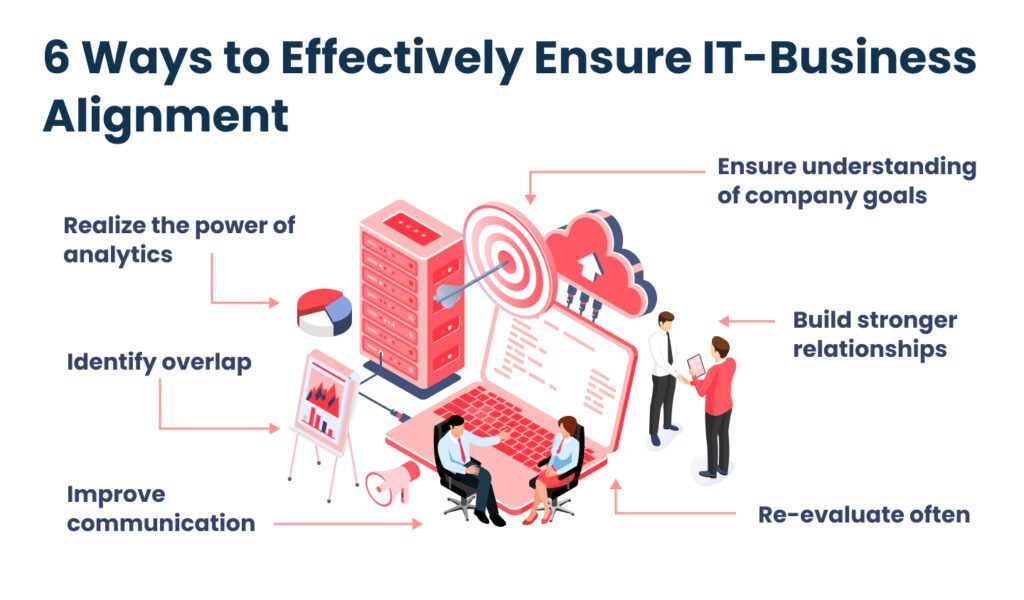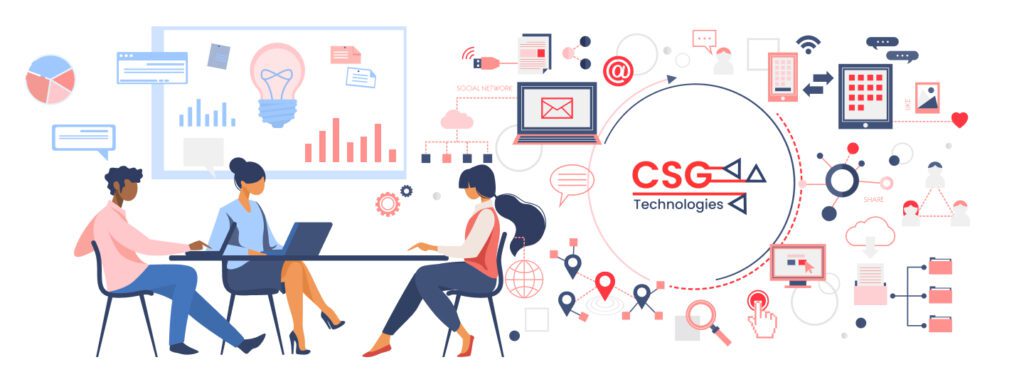Table of contents

In an ideal universe, the IT and business worlds would be perfectly aligned, with IT supplying business leaders with the strategic plans and resources necessary to achieve maximum performance, efficiency and profits.
Yet, as you may have noticed, seeking perfection can be elusive. In the real world, IT leaders are often left guessing whether the plans they’ve created and the technologies they’ve selected are actually fulfilling enterprise expectations. Business leaders, meanwhile, frequently fret that IT isn’t fully tuned in to actual enterprise needs and challenges.
Fortunately, there are proven methods that enable IT leaders to gain a clear understanding of the IT-business relationship. The following seven suggestions show how to build a productive partnership that will satisfy stakeholders’ needs while meeting IT’s time and budget constraints.
1. Realize the power of analytics
Data can offer meaningful insight into the effectiveness of current strategies and the viability of proposed solutions. By using analytics in your business processes, you can better analyze different aspects of your operations and find worthy opportunities for increased alignment. Developing analytics-based initiatives allows companies to use data effectively and gain valuable insight. To do this, create quantifiable goals you can measure.
2. Identify overlap
Another technique for improved business alignment is performing a thorough analysis that checks for redundancies in your operations. By identifying areas of overlap, you can remove inefficiencies within your organization. Paying for multiple software subscriptions that perform the same function or having two positions within separate departments that do the same work are examples of overlap you might encounter in your business.
3. Improve communication
Communication is one of the best ways you can improve efficiency within your company and better align your teams toward common goals and initiatives. If you’re ready to incorporate new strategies into your operations, guarantee everyone within your company understands both the short- and long-term business goals. Develop channels that make it possible for everyone to learn of updates or adjusted priorities quickly, especially your leadership teams. Frequently meeting and connecting with decision-makers and managers can help you ensure everyone within your organization has access to important information.
4. Ensure understanding of company goals
Businesses are most successful when everyone at the company understands the values and goals of the organization. If you plan to improve your business alignment by updating your leadership structure, reporting techniques or communication channels, ensure everyone understands what you plan to do and what the goals are. This can reduce confusion and improve employees’ willingness to support long-term goals.
5. Build stronger relationships
To create a greater sense of cohesion within your departments, consider finding opportunities for meaningful collaboration. There may be ways the different aspects of your business can support one another and accomplish shared goals. Building relationships makes it easier for teams to improve the communication between departments and discover more of these opportunities.
6. Re-evaluate often
The goal of successful business alignment techniques is to help companies establish ongoing strategies for efficiency and optimization. As businesses grow, needs change and technology advances, businesses may need to adjust their goals to respond to both internal and external changes. Staying adaptable and objective can help you ensure you’re always promoting the best strategies and ideas for your organization.
As a leading information technology managed services and solutions company in Florida, CSG Technologies aligns analytics data and information into an existing business intelligence department, so CIOs can correlate sales output with IT events. Whether it is process analysis to gather data or system assessment to identify redundancies, offering collaborative technology that drives communication or developing technology that facilitated interdepartmental collaboration, we are well equipped to address all your IT alignment needs.



